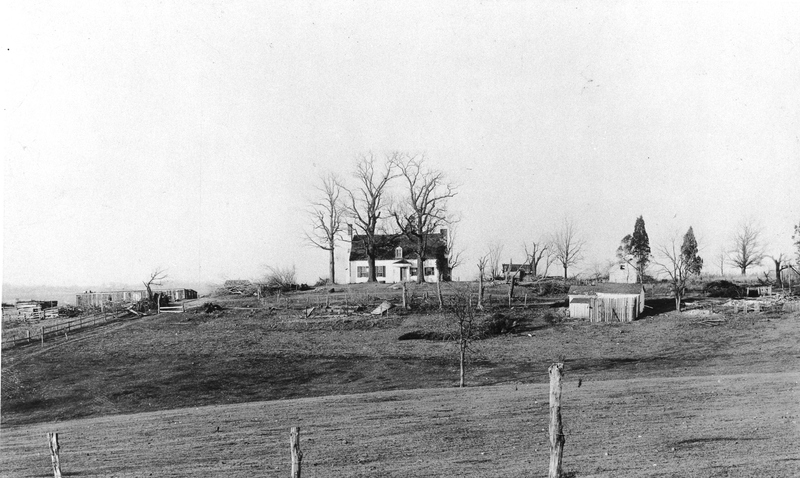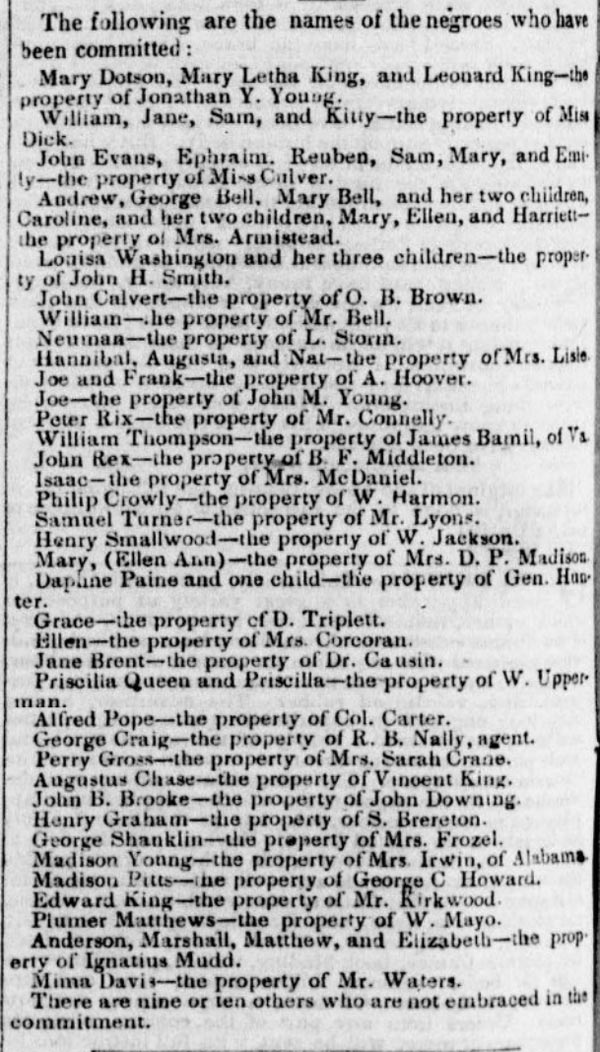“Slavery and Its Legacies” Fellow Mia Owens Develops Antiracist Research Tool

Mia Owens, who earned her master’s degree in Public History this May, has left behind an important legacy at American University. She created a virtual subject guide, Influence of Slavery on American University – a rich resource that students and researchers can use to learn about the historical influences of slavery on the AU campus and throughout the metropolitan area.
 The Murdock Davis House, 1897, future site of American University
The Murdock Davis House, 1897, future site of American University
Owens is the inaugural Public History Fellow in the History of Slavery and Its Legacies in Washington, DC, a two-year graduate fellowship created through a partnership between AU’s Antiracist Research and Policy Center (ARPC), the AU Master of Arts in Public History Program, and the White House Historical Association (WHHA). During her fellowship, Owens spent two years conducting research for public history projects related to the history of enslaved people in the nation’s capital. Her work resulted in a series of articles that promote a deeper understanding of slavery in the DC area, and the subject guide, which will give future researchers the tools to build upon her work.
“The fellowship has done so many important things,” says Sara Clarke Kaplan, executive director of AU’s ARPC. “By increasing public knowledge around the impact and influence of slavery, this collaboration between the White House Historical Association and Antiracist Research and Policy Center contributes to our ongoing national reckoning with a history of systemic racism. At the same time, the fellowship supports the education and training of students committed to creating future forms of public history that increase racial justice.”
A Living, Working Resource
The Influence of Slavery on American University subject guide is accessible online through the American University Library. It provides hyperlinked access to dozens of carefully curated historical materials (articles, books, websites, archival resources, census data, court and cemetery records) on the influence of slavery on AU, including information about local landowners, AU founder Bishop John Fletcher Hurst, and more.
 John F. Hurst diary entry, May 12, 1859
John F. Hurst diary entry, May 12, 1859
The guide is a living and breathing resource, and it will be continually updated by future fellows and scholars. Already, sections on Indigenous history, and regional influences of slavery are in progress, expanding the guide’s relevance well beyond AU. Owens created the tool with guidance from faculty and staff across disciplines: ARPC Executive Director Sara Clarke Kaplan and Associate Director Kayleigh Bryant-Greenwell; Public History Director Malgorzata Rymsza-Pawlowska; Critical Race, Gender, and Culture Studies Assistant Professor Elizabeth Rule, and Leslie Nellis, Head Archivist for Special Collections and Digital Initiatives at the AU Library.
“I’m so happy Mia created this important subject guide to share resources related to the influence of slavery on American University,” says Nellis. “I hope the guide is a call to action and will inspire others to investigate, publicize, and further American University’s commitment to telling this story.”
Uncovering the Past
At AU, the Working Group on the Influence of Slavery on American University was first formed in 2018 to investigate the place of slavery in AU’s history, explore its implications, and recommend ways to address that history. It was all prompted by Nickolaus Mack ’19, the then-managing editor of opinion for The Eagle, who published a column critical of the University’s annual Founder’s Day Ball. Weeks later, the university announced that AU would form a group including staff, faculty, alumni, and Mack to explore the University’s potential connections to slavery. The group produced a report uncovering that “enslaved people were present on the land that is now the University, slaves worked for families involved in the University’s history, and some of the funds that helped develop AU accumulated from wealth from the slavery era.”
In 2020, after the brutal police murder of George Floyd, the White House Historical Association reached out to the ARPC to partner on a fellowship dedicated to research on the history of slavery in DC — and at the White House itself, which relied on labor by enslaved people through the first half of the 19th century. The collaboration soon grew to include ARPC, AU’s Public History program, the University Library, and AU’s working group on slavery. In fall 2020, the fellowship was launched as a one-of-a-kind opportunity to recruit and support graduate students committed to approaching public history through an antiracist framework, and at the same time, to expand community knowledge about the historical influence of slavery at AU.
During the first year of her fellowship, Owens conducted research under the mentorship of historians at WHHA as part of the Slavery in the President’s Neighborhood (SPN) initiative, which features research and educational resources on enslaved and free African Americans who built, lived, and worked at the White House. During her time at the WHHA, Owens’ own research was featured on the SPN timeline.
Several of the articles that Owens featured in the SPN initiative were written by alumni of AU’s public history program. In alumna Lina Mann’s “Building the White House,” Mann describes the use of enslaved labor during White House construction. Owens also highlights alumna Sarah Fling’s article, “The First Ladies and Slavery,” which identifies and holds accountable First Ladies for their roles in holding slaves.
 Incomplete list of the Pearl fugitives in the April 19, 1848 issue of the Daily Union.
Incomplete list of the Pearl fugitives in the April 19, 1848 issue of the Daily Union.
Owens contributed two articles of her own to the SPN timeline. “Running from the Temple of Liberty: The Pearl Incident” recounts the attempted escape of 77 enslaved people from Washington, DC, in 1848 on the Pearl schooner. “Daniel Webster’s House” expands on the stories of Paul Jennings, Monica McCarty, and the lives of other enslaved individuals who worked for Daniel Webster at his house on Lafayette Square.
Owens says the experience has shown her how the complex histories of race and landscape continue to impact the lives of people today. “Looking back at the research that I conducted for these articles, I am encouraged and inspired by others’ work to bring these stories to the public eye through public history and art,” she says. “At the same time, I am reminded of public historians’ continued responsibility to engage in genealogical and historical research, collaboration with descendant communities, and multidisciplinary partnerships to engage in antiracist work.”
What’s Next
Owens is currently working as a research intern at the Smithsonian Institution’s Center for Folklife and Cultural Heritage and as a research associate with the 1882 Foundation, focusing on local Chinese American history and historic resources.
As she looks back, Owens emphasizes the importance of building the subject guide into a resource that the entire AU community can access. “As a public historian, I wanted my work with the fellowship to provide not only information, but also materials for the community to continue learning about and engaging in conversation with AU's history and legacy in relation to slavery,” she explains. “Through the subject guide, I hope that students, faculty, and staff at AU can build upon the Working Group's preliminary findings to expand our understanding of AU history and connections to slavery and settler colonialism.”
Fittingly, the next Slavery and Its Legacies fellow, Joshua Johnson, who has a special interest in unmarked African American graves, will have a chance to carry on where Owens left off. At the same time, the ARPC will continue to provide opportunities for the AU community and the broader public to engage with the legacy and impacts of slavery through the continued partnership of the Slavery and Its Legacies fellowship and support for ongoing programming.
For More Information
The Influence of Slavery on American University subject guide is available online at the University Library.
To learn more about the work of the ARPC, visit the Antiracist Research and Policy Center’s website.
To learn about how the Working Group on the Influence of Slavery on American University was founded, read the group’s history in The Eagle.
